- Ku Wiśle 7, 00-707 Warsaw
- +48 787 783 590
- biuro@interprocess.pl
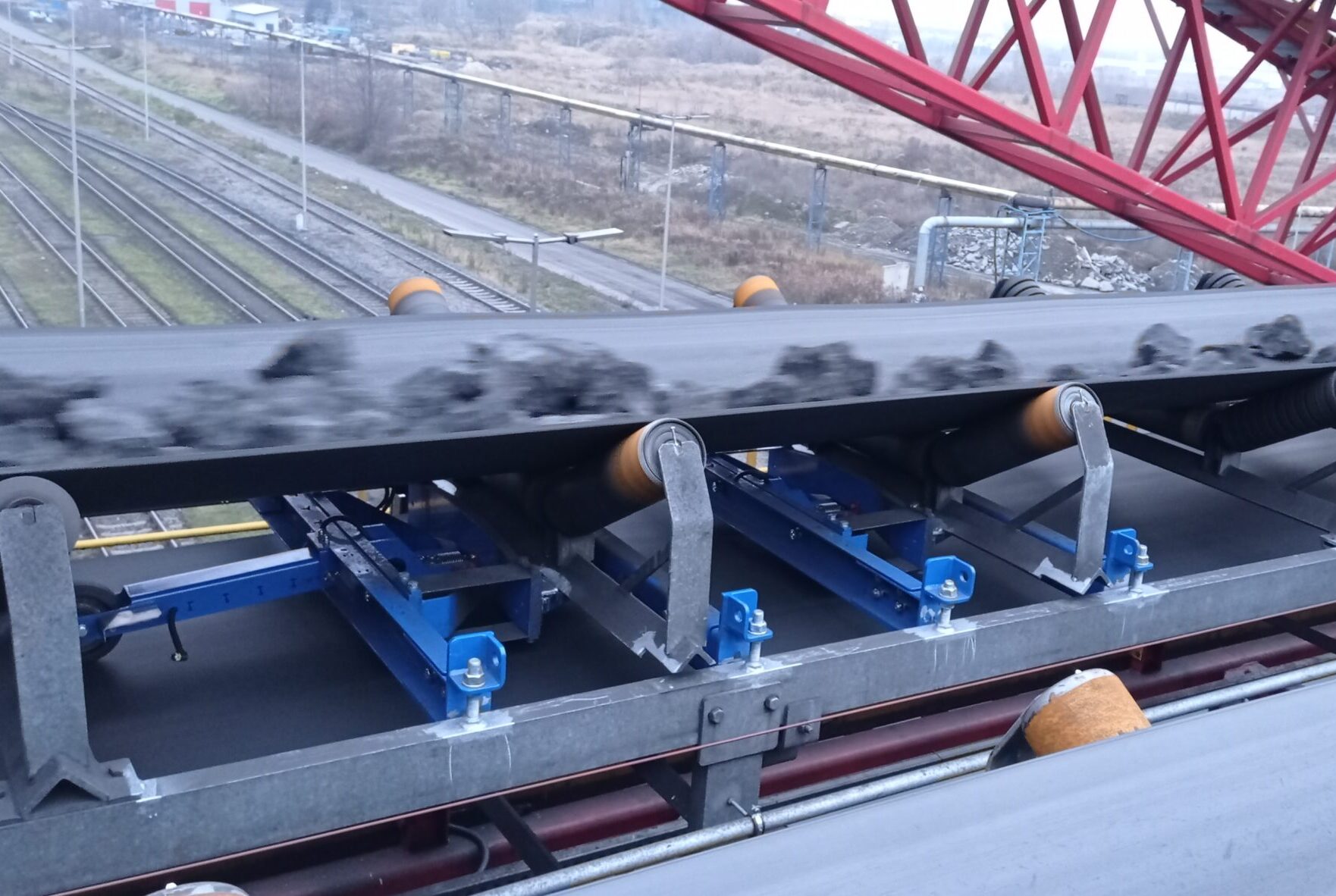
Belt scales
if you want to weigh the bulk material on a belt scale, you can use one of our designs. It does not matter what material you are transporting or what type of industry you represent. Just send us your transport system, the material you are moving and the accuracy you need to measure, and we will select and propose the right solution. Belt scales are installed on the conveyor belt. These are used to measure the material flow on the conveyor belt continuously.
Belt scales may be used for:.
- Control the flow and consumption of materials during production.
- Checks on mixtures.
- Checks at the time of filling and emptying.
- Process control.
We manufacture proven belt scales designs that are ready for installation on customer conveyors. An important aspect is the fact that we supply equipment that has been modified or designed specifically for existing building conditions for unusual systems.
Offer
Belt scale WPL model
The belt scale WPL model is the smallest and suprisingly affordable belt scale in our offer. Due to its small size, it is particularly suitable for installation in places where it is necessary to deal with small amount of space, for example on mobile crushers. Despite the small dimensions, the design of the balance is rigid enough even for high loads, and the shielded strain gauges are not exposed to damage.
Specification:
- the most affordable belt scale on the market,
- two load cells made of aluminum with IP67 protection,
- measurement error ± 0.5..2%,
- the possibility of adjusting the level of rollers,
- belt width up to 1 200 [mm],
- maximum flow up to 4 000 [t/h].
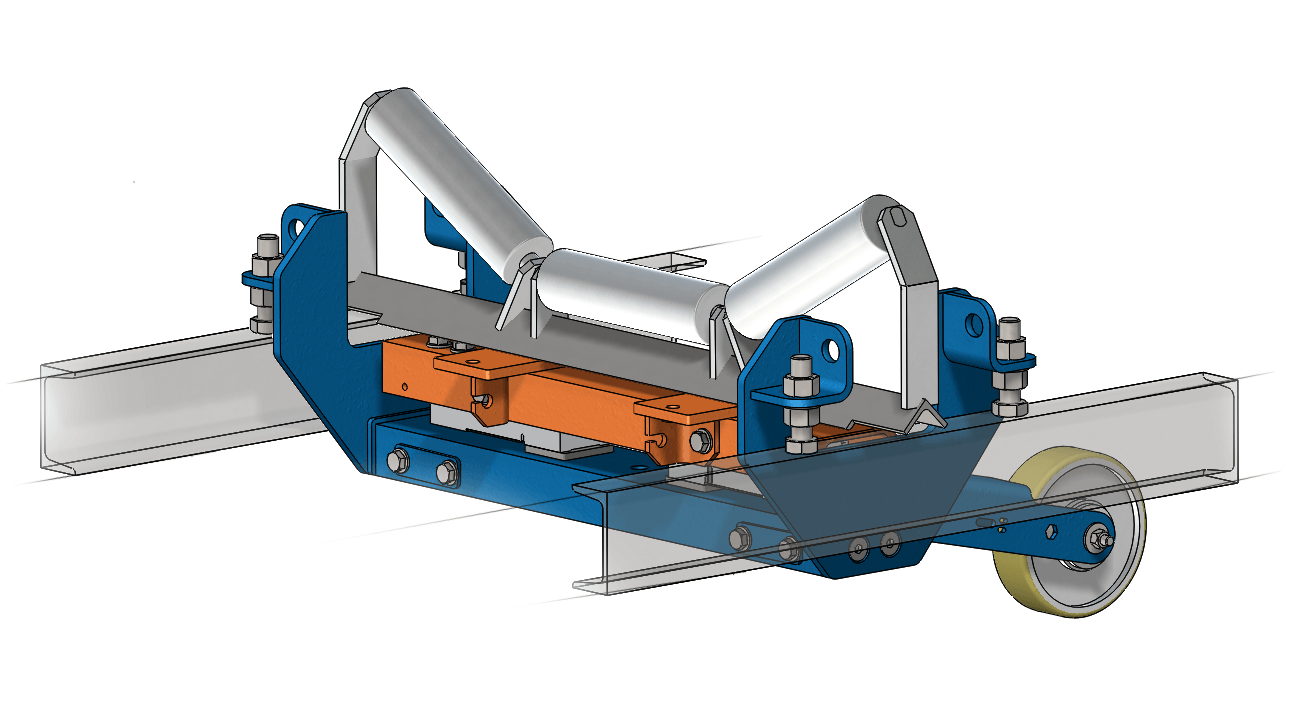
Download:
Belt scale WPC2 model
The extension of the section on which the material is weighed usually allows for even higher accuracy. The material rests on the scale for a longer time and can be weighed more accurately. WPC2 is actually two or more WPC1 weights, so all the advantages of this design are valid also in this case.
Specification:
- two or more WPC1 weights placed in series,
- even higher accuracy: measurement error below ± 0,25%,
- rigid and reliable construction based on a parallelogram flat spring frame,
- lack of leverage and pivots,
- the possibility of adjusting the level of rollers,
- a wide range of belt widths: from 500 to 2 000 [mm],
- maximum flow up to 12 000 [t/h],
- laod cell made of stainless steel with IP68 protection.

Download:
Belt scale WPC1 model
WPC1 is a belt scale we are offering the most to our clients. It is used in the largest number of applications, and its design allows a really high and precise accuracy. The project itself was created after analysing the dynamic requirements for weighing systems in systems characterized by very high loads. Thanks to the use of a single stainless-steel sensor, IP68 / 69K, we can minimize the risk of a potential failure. The use of telescopic arms guarantees that the scale will your conveyor perfectly.
Specification:
- rigid and reliable construction based on a parallelogram flat spring frame,
- lack of leverage and pivots,
- measurement error below ± 0,5%,
- the possibility of adjusting the level of rollers,
- a wide range of belt widths: from 500 to 2 000 [mm],
- maximum flow up to 12 000 [t/h],
- load cell made of stainless steel with IP68 protection.

Download:
Control systems
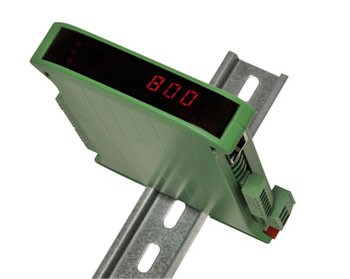
SGM800 with BLT software
The most affordable controller for measuring flow on conveyor belts and basic portion dosing. Although it is intended for installation inside the control cabinet, it has a small keyboard and a display. You can also add an analogue output or Ethernet ports, Rs232/422, Profibus, Canbus.
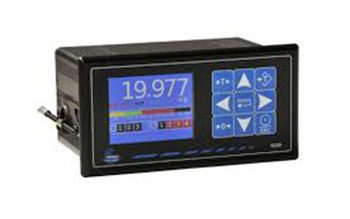
1020 with BLT software
This model is available in two versions: a panel one and an IP65 stainless steel cover, used to measure flow on conveyor belts and basic dose dosing and flow control. It has 1 counter reset and a pulse output. It also has an Ethernet output, it can also have an analogue output or ports Rs232/422, Profibus, Canbus.
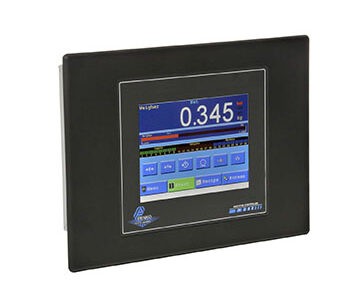
Flex 2100 with BLT software
The best solution for conveyor scales is Flex 2100 (or Flex), which is equipped with a touch screen with process visualization, special software created by us in Polish and extensive communication capabilities (RS232/422, Ethernet, Profibus, Canbus). The driver enables, among other readings from sensors – speed and weight, advanced dosing functions and a preview of 3 dosing counters. The software can also be modified to control the remaining elements on the production line.
Accesories
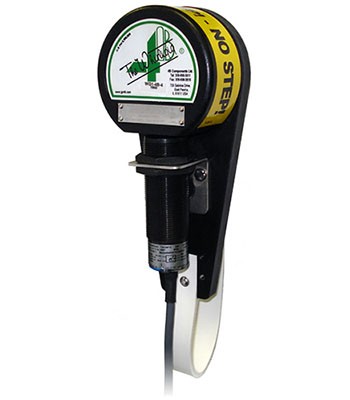
Whirligig sensor
- The most economical solution
- Lightweight, compact design
- Sufficient accuracy for most applications – 8 pulses per revolution
- Installation on a passive shaft or on a separate conveyor roller
- Possibility to use any induction sensor with a diameter of M18 or M30
- Optionally magnetic mounting bracket
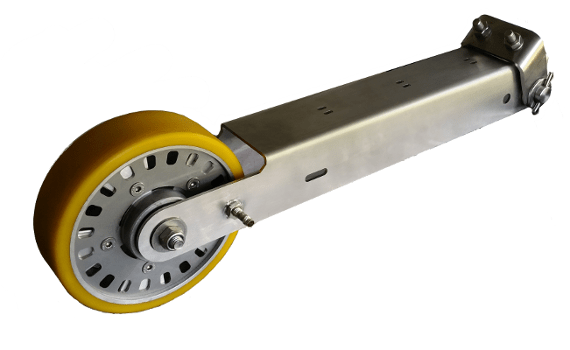
CPW speed sensor
- 39,79 pulses per linear meter of conveyor belt
- Equipped with an induction sensor
- Ideal for belts with variable speed
- Maximum speed 3 [m/s]
- Zinc-plated construction
- Optional: stainless steel version
- Optional: version for Ex zone
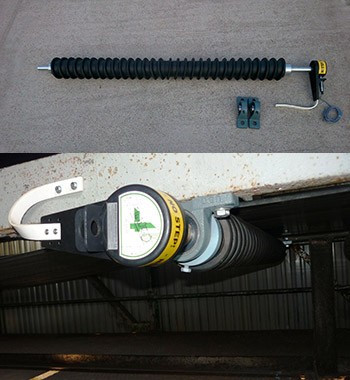
Whirligig sensor roller
- Ready belt support roll for installing the Whirligig sensor
- Rigid construction
- Belt width up to 2000 [mm]
- Self-cleaning rubber rings
- Maximum belt speed 1,7 [m/s]
- Zinc-plated construction
- Bearings included
How does it work?
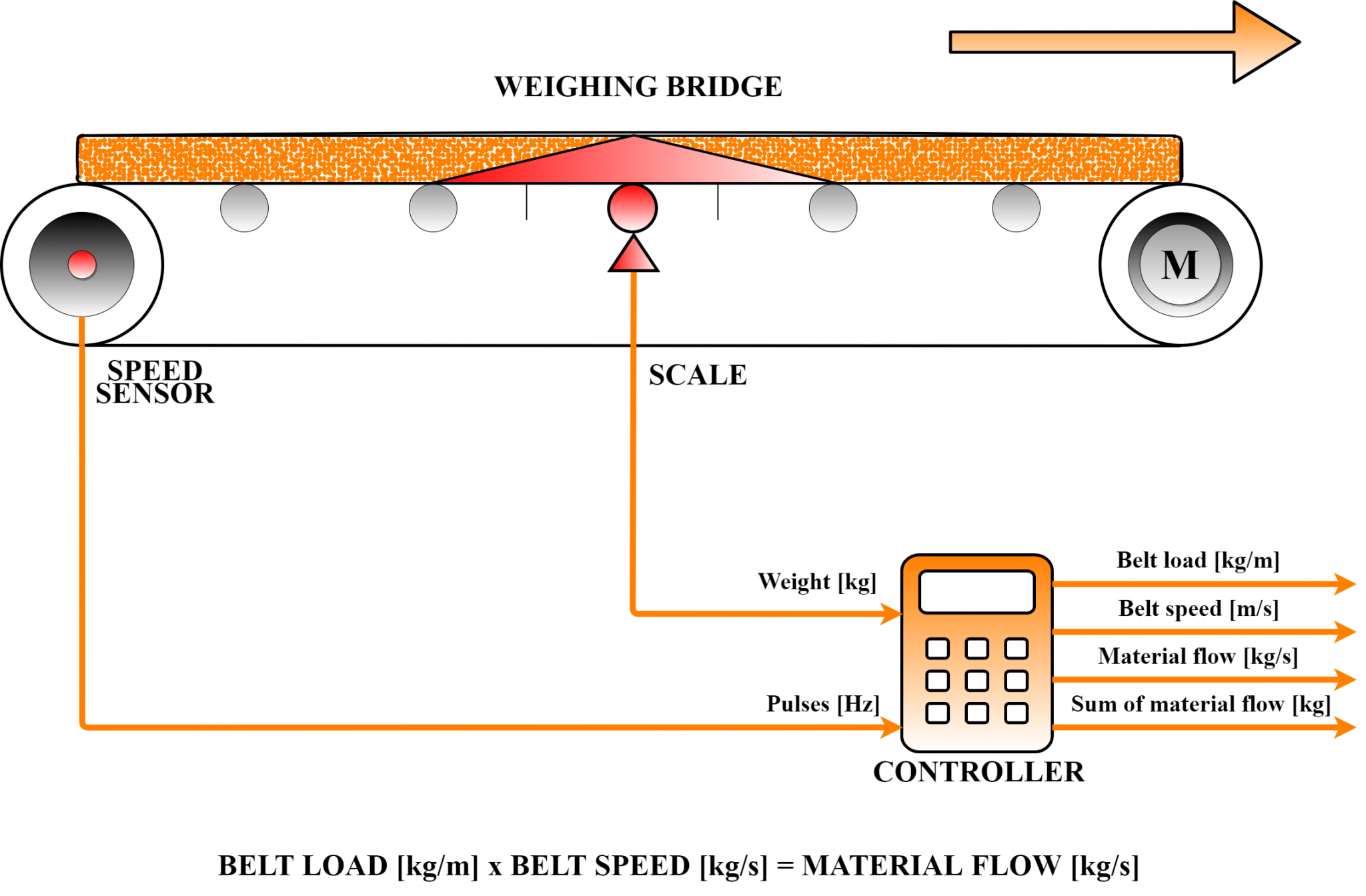
A typical conveyor belt scale consists of a measuring bridge placed on strain gauges, an electronic measuring device and a belt speed sensor. The strain gauges determine the weight of the material on the belt. This information, in the form of a voltage signal, is interpreted by an electronic measuring device. Together with the mass, the device also reads the speed in the form of pulses coming from the belt speed sensor. By these two measured values, the mass flow rate on the tape [kg/s, t/h] and the count increment [kg, t] are calculated.